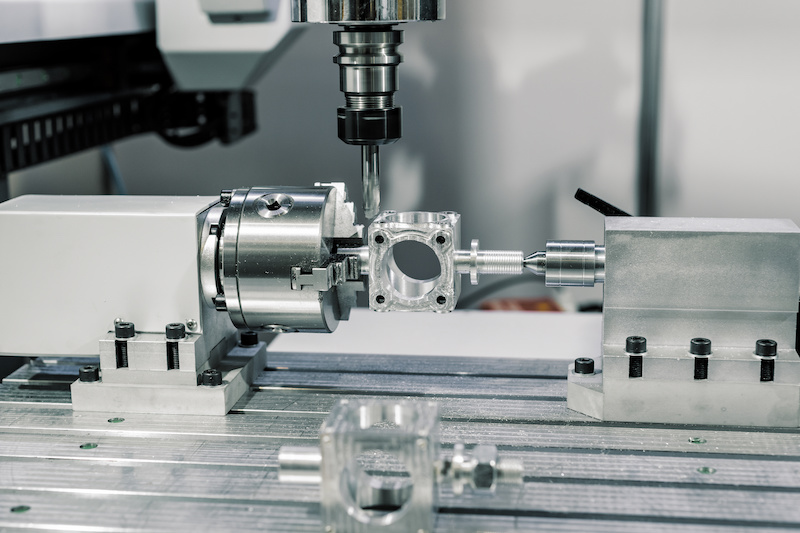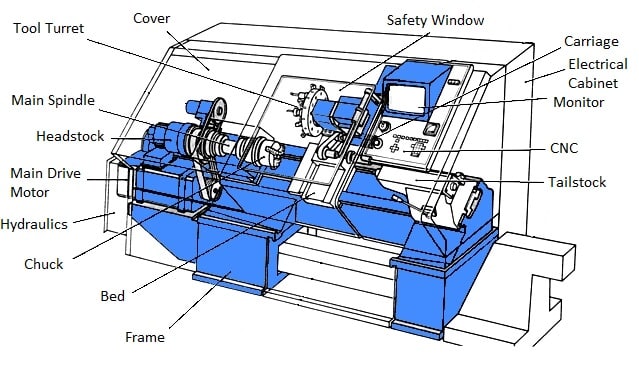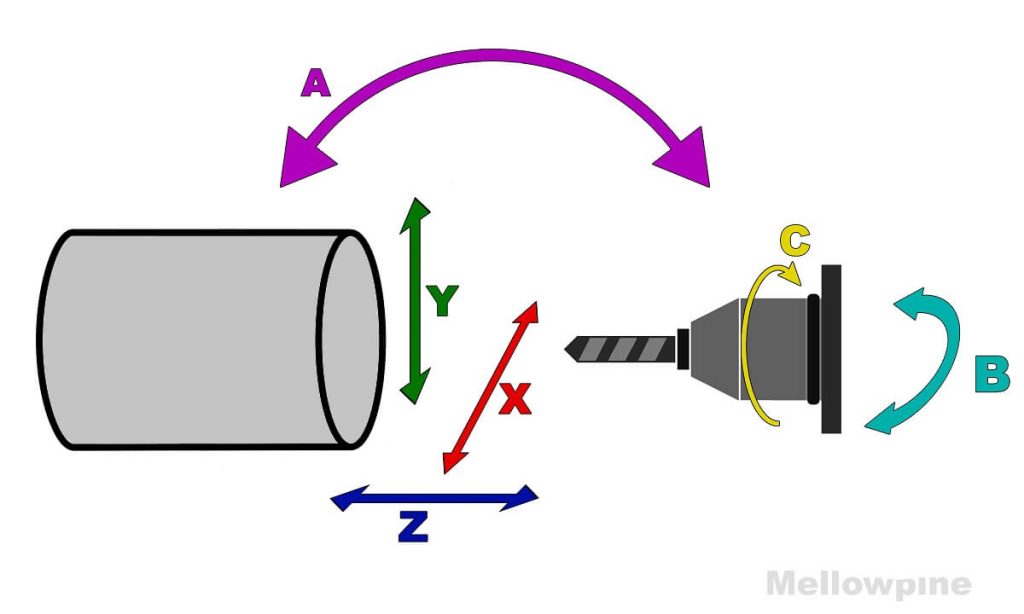Table of Contents
Are you interested in building your own CNC lathe? With the right tools and knowledge, it’s possible to create a high-quality machine that can handle a variety of tasks. But where do you start?
First, it’s important to understand the basic components of a CNC lathe and how they work together. From there, you can begin gathering materials and designing your machine. Whether you’re a seasoned DIYer or just starting out, building a CNC lathe can be a rewarding and challenging project that yields impressive results. So let’s get started!
- Choose and purchase a CNC kit or individual components such as stepper motors, controller, power supply, and spindle motor.
- Assemble the frame using metal or wooden beams, and mount the linear rails and bearings.
- Install and wire the electronics, including limit switches, emergency stop, and motor drivers.
- Connect the spindle motor and mount the chuck or collet.
- Install and configure the software, such as Mach3 or LinuxCNC, and calibrate the machine.
- Test and fine-tune the lathe by cutting and turning different materials and shapes.
How to Build a CNC Lathe: A Comprehensive Guide
If you are interested in building a CNC lathe, you are in the right place. In this article, we will guide you through the process of building your own CNC lathe from scratch. We will cover everything from selecting the right components to assembling and testing your machine. So, let’s get started!
1. Selecting the Components
The first step in building a CNC lathe is to select the right components. You will need a spindle motor, a stepper motor, a lead screw, linear guides, bearings, and various other mechanical and electrical components. You should choose high-quality components that are compatible with each other to ensure the best performance.
When selecting components, consider the size of the lathe you want to build and the materials you will be cutting. You should also consider your budget and the level of complexity you are comfortable with.
2. Designing the Lathe
Once you have selected your components, you need to design your lathe. You can use software like AutoCAD or SolidWorks to create a 3D model of your lathe. This will help you visualize the machine and identify any potential issues before you start building.
You should also consider the size of the lathe, the cutting capacity, and the number of axes you want to control. The design should be flexible enough to accommodate any future upgrades.
3. Building the Frame
The frame is the foundation of your lathe. You can build the frame using steel or aluminum extrusions, or you can weld your own frame using steel tubing. The frame should be sturdy and rigid to ensure accuracy and repeatability.
You can use a CNC plasma cutter or a bandsaw to cut the frame components. Once you have the components, you can weld or bolt them together according to your design.
4. Assembling the Mechanical Components
Once you have the frame, you can start assembling the mechanical components. You should mount the spindle motor, stepper motor, lead screw, linear guides, and bearings according to your design.
You should also install the tool post, tailstock, and chuck. Make sure everything is aligned and tightened properly.
5. Wiring the Electrical Components
The next step is to wire the electrical components. You will need to connect the stepper motor drivers, power supply, limit switches, and other electrical components according to the wiring diagram.
You should also install the control board and connect it to your computer. Make sure everything is properly grounded and insulated.
6. Configuring the Software
Once everything is wired up, you need to configure the software. You can use software like Mach3 or LinuxCNC to control your lathe. You will need to configure the software to match your lathe’s specifications.
You should also calibrate the machine to ensure accurate positioning and motion control.
7. Testing the Machine
Before you start cutting, you need to test the machine. You should run a test program to check the machine’s accuracy and repeatability. You should also test the machine’s limits and make sure everything is working as expected.
If you encounter any issues, you should troubleshoot and fix them before proceeding.
8. Adding Accessories
Once you have a working lathe, you can add accessories to enhance its functionality. You can add a coolant system, a tool changer, or a workpiece probe. You can also add a protective enclosure to improve safety.
9. Benefits of Building Your Own CNC Lathe
Building your own CNC lathe has several benefits. You can save money compared to buying a pre-built machine. You can also customize the machine to match your specific needs. Building your own machine is also a great learning experience.
10. Conclusion
Building a CNC lathe is a rewarding project that requires careful planning and attention to detail. By following the steps outlined in this article, you can build your own CNC lathe and enjoy the benefits of having a custom machine.
Frequently Asked Questions
Building a CNC lathe can be a challenging but rewarding task. Here are some common questions and answers that can help you get started.
What is a CNC lathe?
A CNC lathe is a machine tool that rotates a workpiece while a cutting tool is moved along various axes to create a symmetrical object. CNC lathes use computer-controlled systems to automate the cutting process, resulting in precise and repeatable parts.
Building a CNC lathe requires a solid understanding of mechanical and electrical engineering principles. You will need to choose the right components, such as stepper motors and linear guides, and assemble them into a sturdy frame. You will also need to program the lathe’s control system, which can be a complex task.
What are the benefits of building a CNC lathe?
Building a CNC lathe can be a great way to learn about machine design and gain hands-on experience with computer-controlled systems. It can also save you money compared to buying a pre-built machine, and give you the flexibility to customize the lathe to your specific needs.
Additionally, a well-built CNC lathe can help you produce high-quality parts with tight tolerances, which can be useful for a variety of applications.
What components are needed to build a CNC lathe?
There are several key components that are needed to build a CNC lathe, including a sturdy frame, stepper motors, linear guides, a spindle motor, and a control system. The frame should be made of a rigid material, such as aluminum or steel, and should be designed to minimize vibrations. The stepper motors and linear guides will control the movement of the cutting tool along the various axes, while the spindle motor will rotate the workpiece. The control system will allow you to program the machine’s movements and adjust its settings as needed.
It’s important to choose high-quality components that are compatible with each other and will work well together. You may also need additional tools and equipment, such as a CNC controller and software, to assemble and operate the lathe.
How do I program a CNC lathe?
Programming a CNC lathe can be a complex task that requires a solid understanding of computer programming principles. You will need to choose a programming language, such as G-code, and create a series of commands that tell the machine how to move the cutting tool along the various axes. You will also need to set the lathe’s parameters, such as feed rates and spindle speed, to ensure that it operates correctly.
There are many resources available online that can help you learn how to program a CNC lathe, including tutorials, forums, and software packages. It’s important to take your time and carefully test your programs before running them on the machine to avoid damaging the lathe or producing faulty parts.
What safety precautions should I take when building and using a CNC lathe?
Building and using a CNC lathe can be dangerous if proper safety precautions are not taken. When building the lathe, be sure to wear appropriate personal protective equipment, such as safety glasses and gloves, and follow all manufacturer’s instructions. When using the lathe, be sure to keep your hands and clothing away from moving parts, and avoid wearing loose clothing or jewelry that could get caught in the machine.
It’s also important to keep the lathe clean and well-maintained, and to regularly inspect the components for signs of wear or damage. Never leave the lathe unattended while it is running, and be sure to turn off the power and unplug the machine before making any adjustments or repairs.
In conclusion, building a CNC lathe is a challenging but rewarding process that requires a lot of hard work and dedication. With the right tools and resources, anyone can learn how to create a machine that can produce high-quality parts with precision and accuracy.
One of the key factors to keep in mind when building a CNC lathe is to make sure that you have a solid understanding of the principles of machining and programming. This will enable you to create a machine that can handle a wide range of materials and produce parts that meet your exact specifications.
Finally, it’s important to remember that building a CNC lathe is not a one-time event. It’s an ongoing process that requires continuous learning and improvement. By staying up-to-date with the latest advancements in technology and refining your skills over time, you can create a machine that will serve you well for many years to come.
Request a quote today!
[contact-form-7 id="1578" title="Contact form"]
Please compress the file into a ZIP or RAR file before uploading. Alternatively, send through your RFQ by email.
enquires@unitymanufacture.com





